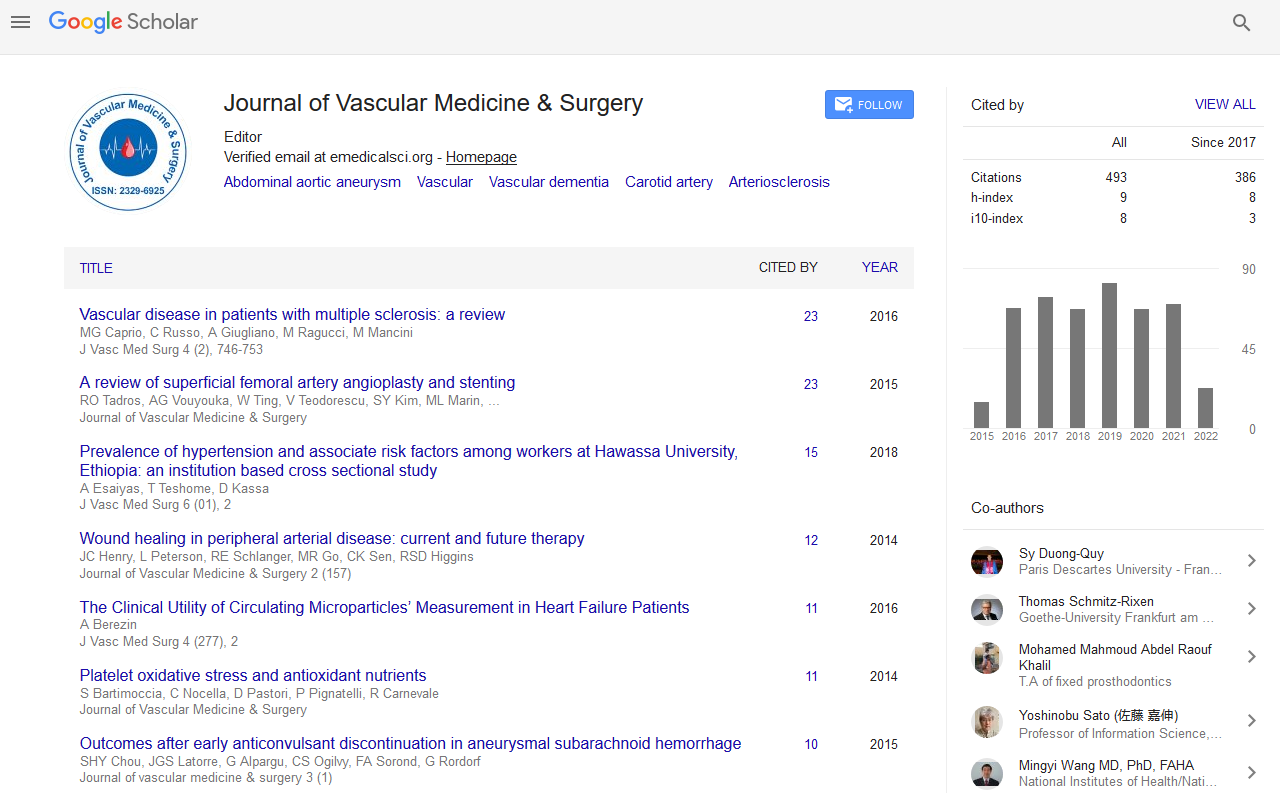Indexed In
- Open J Gate
- Academic Keys
- RefSeek
- Hamdard University
- EBSCO A-Z
- OCLC- WorldCat
- Publons
- Euro Pub
- Google Scholar
Useful Links
Share This Page
Journal Flyer

Open Access Journals
- Agri and Aquaculture
- Biochemistry
- Bioinformatics & Systems Biology
- Business & Management
- Chemistry
- Clinical Sciences
- Engineering
- Food & Nutrition
- General Science
- Genetics & Molecular Biology
- Immunology & Microbiology
- Medical Sciences
- Neuroscience & Psychology
- Nursing & Health Care
- Pharmaceutical Sciences
Principles of treatment of high flow vascular malformation of head and neck
World Congress on Vascular Diseases, Medicine & Surgeons Summit
October 24-25, 2016 Chicago, USA
Ming-Ting Chen, Jian-Jr Lee and I-Chang Su
National Taiwan University Hospital, Taiwan
Scientific Tracks Abstracts: Vasc Med Surg
Abstract:
The high flow vascular malformation of head and neck can be divided into two groups. One is superficial arterial group and the other is deep seated arterial group. Before the treatment diagnostic tools are important including physical examination, thermogram and arteriogram (in the past), MRI with construct and T2, 3D CTA, sonogram and Doppler check up. 3D CTA will accurately pin point the distribution of arterial anomalies and visualize the nidus of malformation. For superficial located arterial anomalies we used to make ligation of feeding arteries and then inject sclerosing agent (Sodium tetradecyl sulfate) to the nidus of lesion, then local compression will be performed for period of time. For these deep seated arterial anomalies group arterial catheterization with embolization should be done to shut off feeding arteries then simultaneous sclerotherapy will be done into the nidus of lesion. MRI is the important reference to judge the location and extent of nidus. Also Doppler check up and sonogram will be helpful to locate the nidus more accurately for sclerotherapy. Post sclerotherapy local compression garment is necessary for period of time. Repeated sclerotherapy can be done each 2 months intervals. In the past 15 years we were able to treat superficial arterial anomalies group. For deep seated arterial anomalies we started to catheterize and embolize feeding arteries by a neurosurgeon (our new team member). Then sclerotherapy was done follow with compression garment obtained a wonderful result. I like to share our experience on the meeting and receive the valuable comment from the expert in the audience.
Biography :
Ming-Ting Chen graduated from National Taiwan University in 1960. He finished his General Surgery Residency training in Taiwan. Then he went to United States in 1964. He had one year of internship at Coney Island Hospital New York, 3 years General Surgical Residency at Pittsburgh Montefiore Hospital and 3 years Plastic Surgery residency program at New York Elbert Einstein Medical College Hospital under Prof. Barsky. After 7 years in United States (1964-1971), he came back to Taiwan and joined National Taiwan University Hospital to be the Chief of Plastic Surgery (1979-2000) and became a Senior Consultant at Cathay General Hospital after 2000. Most of his work after 2000 focused on hemangioma and vascular anomalies. He has published 156 papers in various journals also has been a Chief-Editor of Taiwan Journal of Plastic and Reconstructive Surgery from 1998-2012.
Email: mingtchen@ntuh.gov.tw


